If you are new to chickens you may be wondering what are the best egg laying chicken breeds. Below I have compiled a list of the best layers and why some breeds, or hybrids, lay better than others.
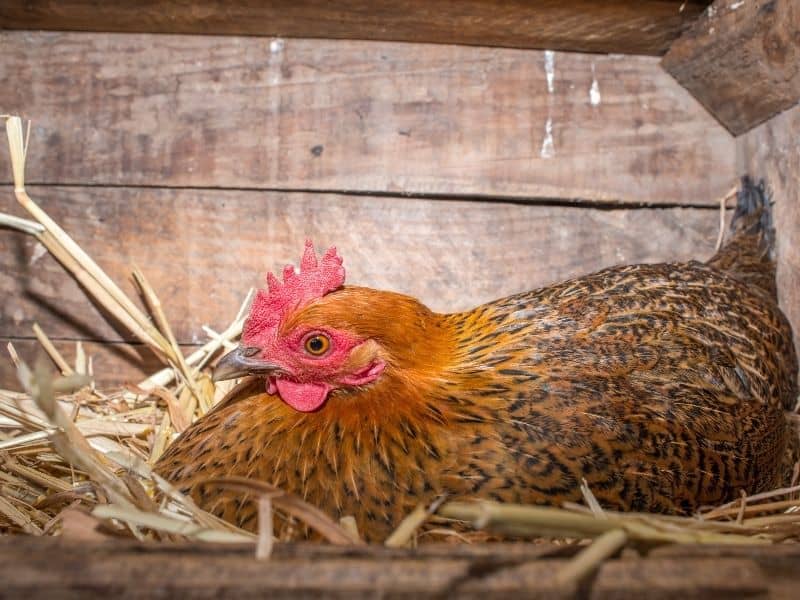
Best Egg Laying Chicken Breeds
1. Leghorn
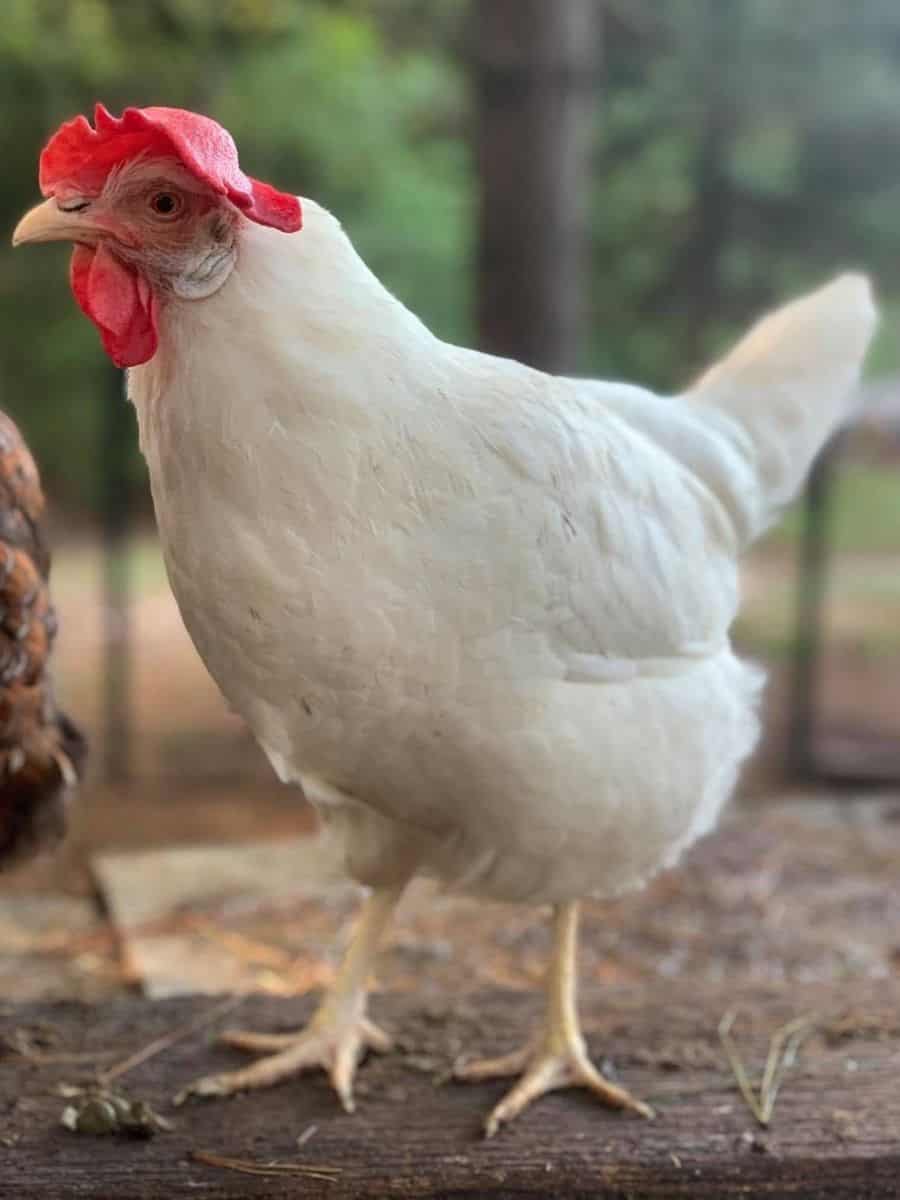
If you’ve ever bought eggs from the grocery, most likely you’ve had Leghorn eggs. The Leghorn is a breed well known for its egg-laying abilities. The breed originated in Italy and was first exported to the US in 1828.
They produce on average 250-280 eggs per year with some birds laying more than 300 per year. Leghorns lay a large, white egg and will start their egg production as early as 16-20 weeks of age. Because they are such heavy egg producers they normally only lay consistently for the first two years. After that egg production drops off quite noticeably. This will hold true for the majority of your heavy egg layers.
Leghorns are not the friendliest of the options for a backyard flock. They tend to be flighty and skittish around people. They are wonderful foragers and do well in a free-range situation.
So if you don’t want a lap chicken, but one that lays a whole lot of eggs and almost never goes broody, the Leghorn just might be the choice for you.
2. Golden Comet
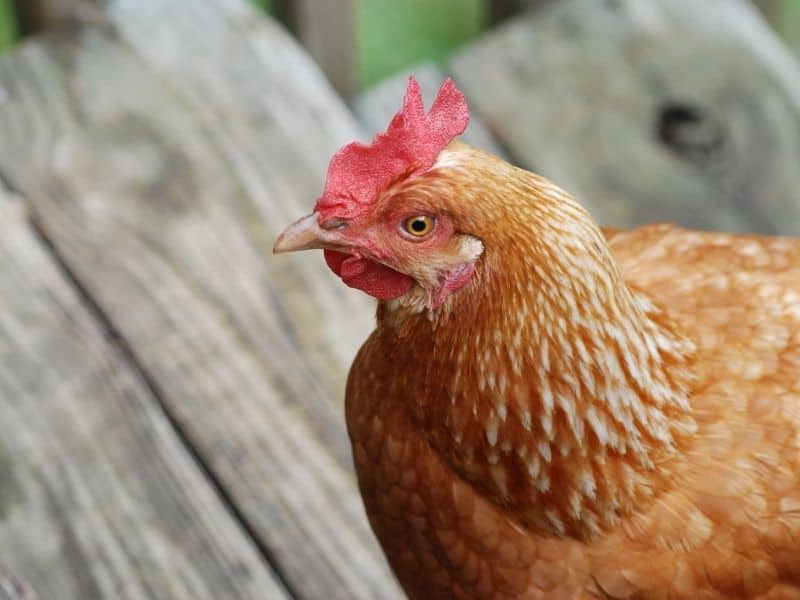
Out of all the choices of chickens bred for their egg laying ability, the Golden Comet is hands down my absolute favorite. This is not a breed of chicken but rather a hybrid, created by crossing a White Rock hen with a New Hampshire rooster. The result is a sex linked hybrid known as the Golden Comet.
Sex linked means that you can tell the gender of the chick at hatch by its color. The females are golden buff and the males yellow. This makes buying chicks easy for those folks who are not able to have roosters where they live.
The Golden Comet is right up there with the Leghorn in its egg producing abilities. You can expect to get 250-320 large brown eggs a year for the first two years. Which is on par with the Leghorns. What you will find that is greatly different from the Leghorn is their personality.
Golden Comets are friendly, fun, and fantastic! They have big personalities in a compact body. They are curious and busy and so much fun to watch. They are great foragers and are much calmer than the Leghorn. I am able to pick mine up a carry them around, they come when I call them and I even had one (my favorite girl, affectionately known as Yard Bird) who loved to ride on the 4 wheeler with me while I did the farm chores. If you want an awesome egg producer who doubles as a quirky sidekick, the Golden Comet is your gal.
3. Rhode Island Red, also known as RIR
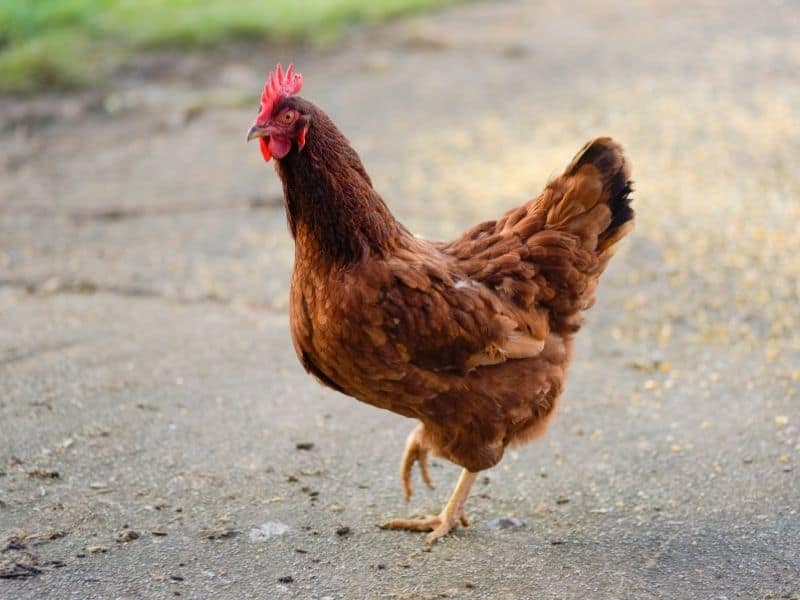
The Rhode Island Red is an American breed developed in the state for which it is named for. It is also the state bird of Rhode Island. They were developed in the late nineteenth century by cross-breeding birds of Oriental origin with the brown Leghorn.
They are typically very healthy and hardy birds with beautiful rich mahogany feathering. They lay on average 175-275 eggs a year, roughly around 5-6 eggs a week. They lay a medium to large egg that is light brown in color. The Rhode Island Red is a dual-purpose breed and can be great as a table bird as well as a layer.
The roosters of this breed have a reputation for being aggressive and I wouldn’t recommend them, especially if you have small children. The hens have great personalities and are friendly, oftentimes they will follow you around looking for a treat. They are great foragers and do well in a free-range situation.
4. Australorp
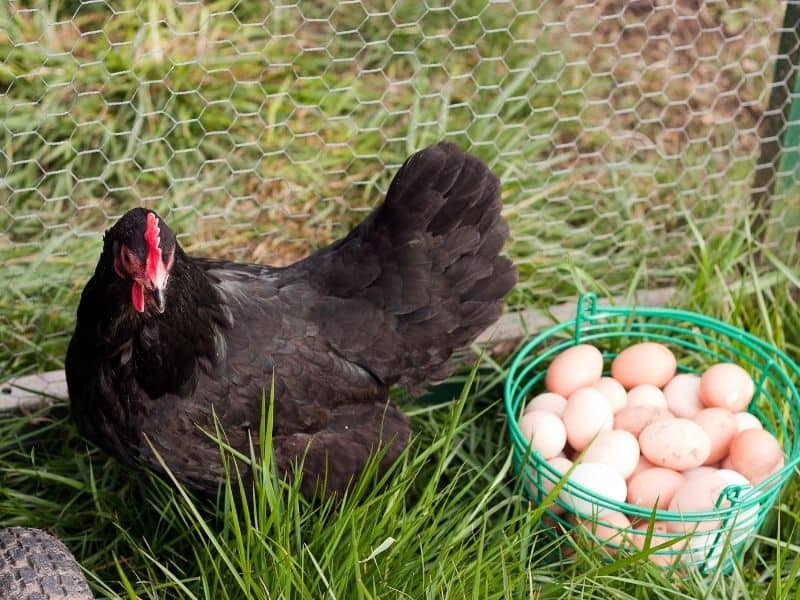
The Australorp is an Australian breed of chicken that became popular in the US in the early 1920s. They are derived from the Black Orpington, hence the “orp” on the end of the name. Originally created as a utility breed, they generated international attention when six hens set a world record for laying 1857 eggs in a 365 day period. That is roughly 309.5 eggs per hen! While your Australorp may not give you that many eggs in one year, you should expect them to lay around 250 eggs per year.
This breed is a heavier chicken than the three listed above, making it great as a table bird as well as an excellent egg layer. They are slower to mature and generally begin laying around five to six months of age and lay a large, light brown egg.
The Australorp is quiet, docile, and takes to being confined well. They have also been known to go broody and make good mothers, most likely due to their Orpington origins. If you are looking for a well-rounded layer, this just might be the bird for you.
5. The Barred (Plymouth) Rock
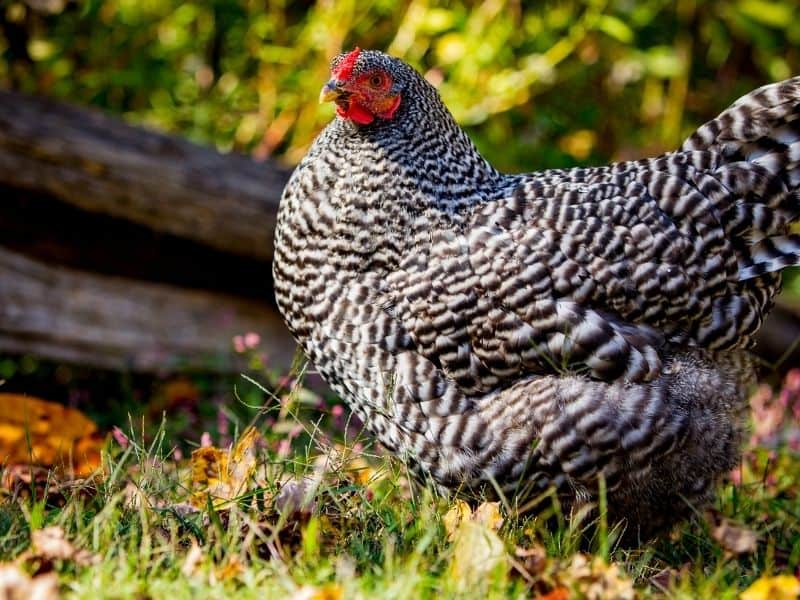
The Plymouth Rock is one of the oldest American breeds, first coming onto the scene in the mid-1800s. The “Barred” Rock which refers to the color and is not actually the breed name, is the most popular of the Plymouth Rock color varieties.
Their barred appearance is striking and sets them apart in a mixed flock. They are extremely hardy, cold tolerant, and are productive layers. They are a dual-purpose breed and very popular in backyard flocks.
The hens are friendly and docile and are not known to be mean or bad-tempered. They are wonderful foragers but also do well in confinement.
You can expect to get around 200 or so eggs per year which equal out about 4 eggs per week.
They are not the broodiest of the breeds on this list, but can sometimes be persuaded with a few eggs left in the nest.
If you are looking for a calm, uniquely patterned companion the Barred Rock is it.
6. Buff Orpington
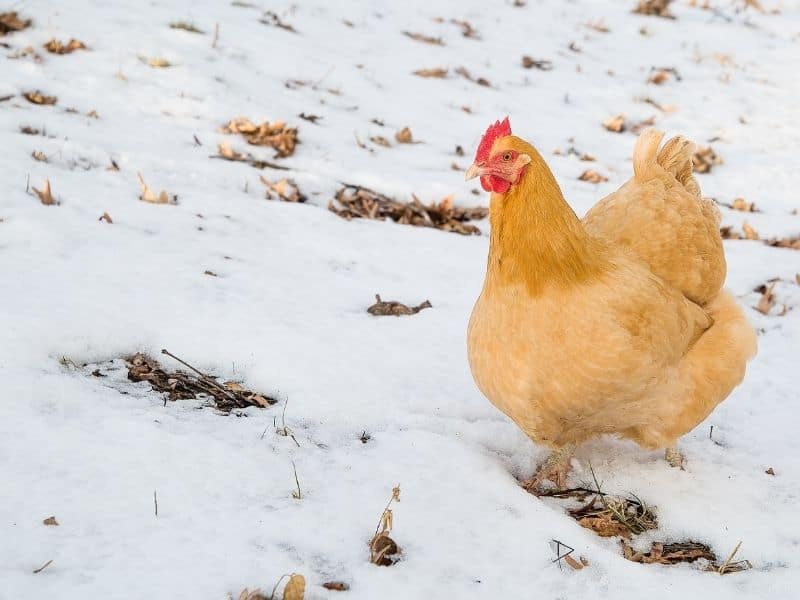
Big, bold, and bursting with personality, the Buff Orpington is the darling of the chicken world. Bred in England in the late nineteenth century as a dual-purpose breed, but gained notoriety for being a show bird.
You can expect around 190 light brown eggs annually from the Buff Orpington which is pretty impressive for a bird this size. Their egg-laying ability is only secondary to their lovable personality. They are sweet, regal, and never in a hurry… think of an English lady sashaying through a perfectly manicured garden with her head held high, parasol in hand. This is how I picture the Buff Orpington.
And although buff just denotes the color and not the breed itself, the Buff Orpington is the most widely known of the Orpington colors. She also makes a great broody and because of her large stature can accommodate a sizable amount of eggs for hatching.
If you want a family-friendly, versatile breed of laying hen that also looks stunning meandering through your yard, the Buff Orpington might just be the girl for you.
7. Ancona
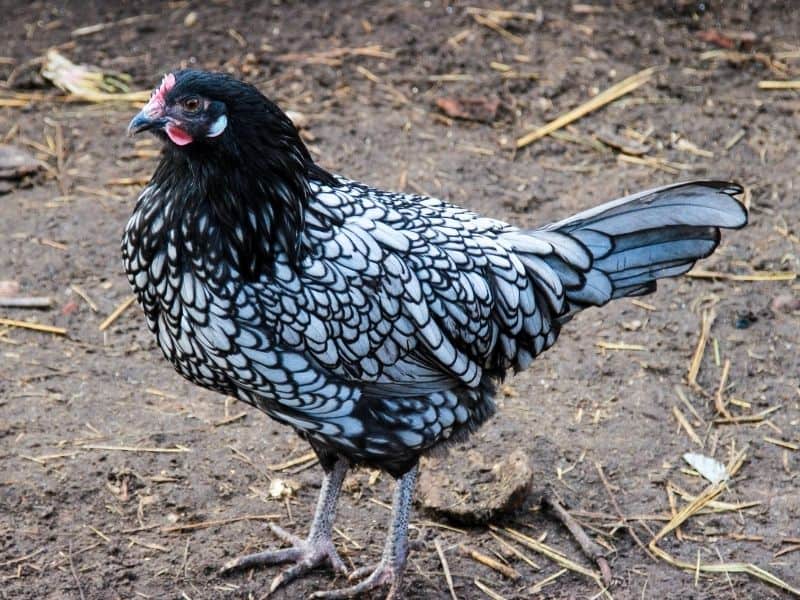
The Ancona is another Italian breed of chicken with beautiful black mottled feathering. They lay a large white egg and are known to produce 180-220 eggs per year. They are known to be flighty much like their Italian cousins the Leghorn and very rarely go broody.
The Ancona is a bold, active forager and does well in a free-range situation. They convert feed well which makes them an economical egg producer.
This breed may not be as easy to come by as those listed above but if you do a bit of searching you may be lucky enough to have a breeder in your area. Although she won’t be a lap chicken she’ll be a fierce egg producer, so if efficiency and economy are important to you, seek out the Ancona. She will get the job done.
8. Easter Egger
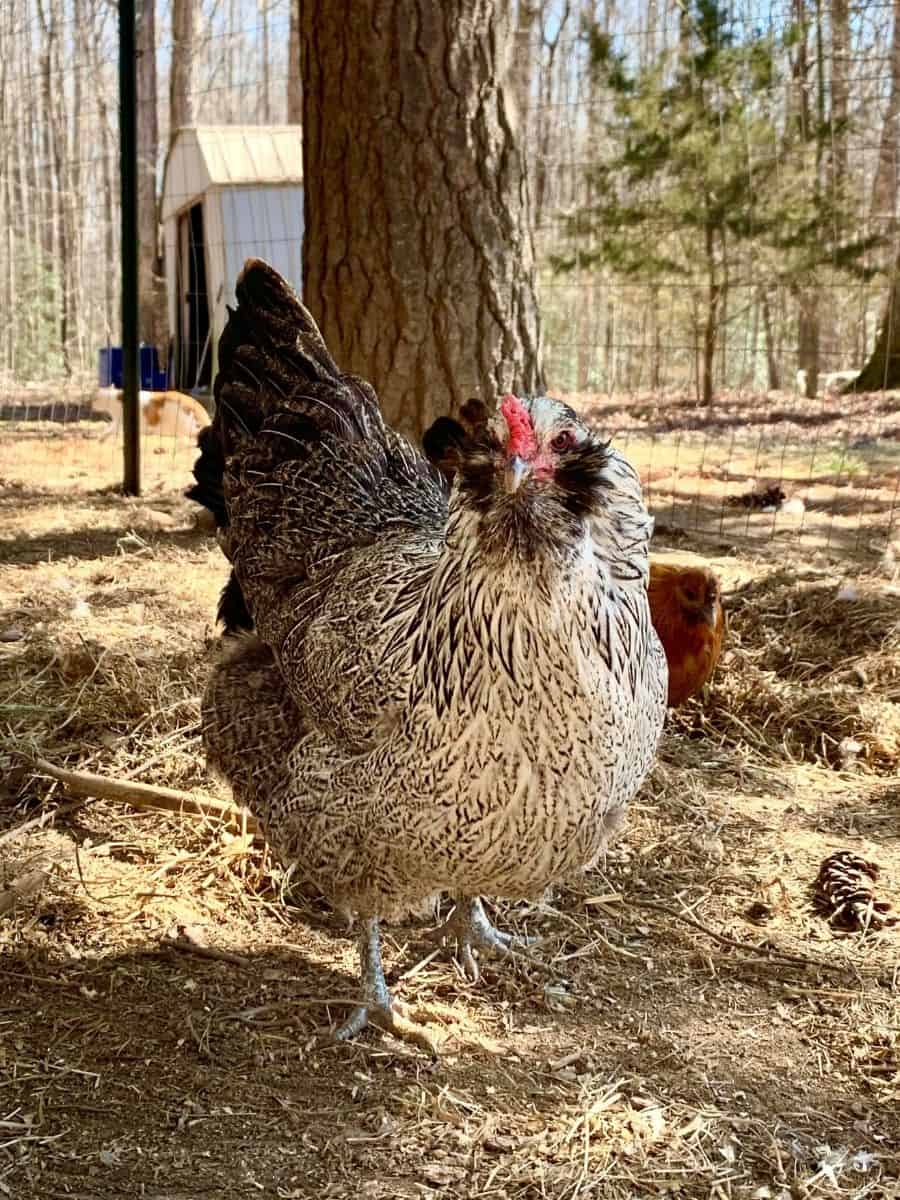
I would be remiss if I did not add the Easter Egger to the list. First let me explain that this is not a breed of chicken, but rather a mix of typically a colored egg gene rooster such as an Ameraucana with a brown or white egg-laying hen. The result of this pairing is what is affectionately known as the Easter Egger, or Olive Egger which I’ll explain below.
Many small backyard flocks these days contain at least one of these fun, quirky mixes. The Easter Egger is desired for its blue or green egg-laying ability. They lay eggs that look as if they have been dipped in dye (chickens that lay green eggs).
In order to create an Easter Egger, you must pair a colored egg gene rooster with a hen that lays a white egg such as a Leghorn, Ancona, or other such bird. This will give you offspring that lay blue eggs. To create an Olive Egger you would need to pair a colored egg gene rooster with a hen that lays a brown egg, a Golden Comet, Rhode Island Red, and so on. This pairing will give you offspring that lay an army drab green, or olive-colored egg. Now you must remember that when breeding mixes like this that nothing will necessarily breed true. So while most times you will get a colored egg layer, sometimes you will not.
The Easter Egger is not to be confused with the Ameraucana which is an actual breed of chicken that lays a bright blue egg. Many hatcheries will label their chicks as “Americanas” which are just Easter Eggers with a fancy label. There is no such thing as an Americana.
All of that being said I find that my Easter Eggers are wonderful layers and produce quite well. They also have some of the most amazing personalities I’ve seen, and I’ve owned many different breeds. They are fun, quirky, extremely smart, and strong-willed.
If you are looking to add color to your egg basket and want a chicken that will entertain you on a daily basis, consider the Easter Egger. You won’t be disappointed.
The birds listed above are just a sampling of the many different types of egg-laying breeds, hybrids, and mixes that will give you excellent egg production and companionship for years to come.
When deciding on which types of chickens fit the bill for you, take into consideration all of the facets of each one, not just egg laying ability. Personality, hardiness, foraging skills, broodiness, adaptability… all of these things make a well-rounded layer as well as a good companion.
And once your chickens start laying, you’ll need lots of these!
Happy egg hunting!
Frequently Asked Questions about egg laying chickens
Do I need a rooster for my hens to lay eggs?
No, you do not. A hen will lay eggs whether a rooster is present or not. If you want fertilized eggs for hatching you will need a rooster for that. Otherwise, the ladies do just fine without a rooster present.
If I want 3-4 dozen eggs a week, how many hens do I need?
Six heavy laying hens such as the Leghorn or Golden Comet should each produce an egg a day, give or take a day here and there, for the first two years of their laying life. That will give you 3.5 dozen eggs a week.
How many laying boxes do I need?
The rule of thumb is one box for every 3-4 hens. I have found that my hens usually all prefer the same one or two boxes no matter how many nesting boxes I provide for them. Chickens tend to lay their egg where they see another egg has been laid. This is purely instinctual as having all the eggs in one place makes it easier for a broody hen to sit on them to hatch. This is why you will see your ladies lined up to use the same box even though there might be several empty ones available.
Do I need to wash my eggs after I collect them?
This is really a personal preference. Some folks like to wash their eggs immediately and refrigerate them, others prefer to leave them unwashed on the counter. If you do decide to wash them they will need to be refrigerated right away. Washing the egg removes the natural bloom which keeps the egg fresh. An unwashed egg can sit on the counter for 2-3 weeks as the bloom is still intact and keeping the egg fresh. This is the method I prefer. I just simply rinse my eggs really well as I go to use them.
Why do hens cluck/sing after laying an egg?
Some think t’s because of the relief the egg-laying produces, while others think she sings to distract attention from her egg to protect it from predators. If you have several chickens, you might hear them join in their sister’s singing to create a choir. We even have a rooster who joins in. He’s an adorable bantam and his song is a lot higher pitch, and a lot faster. I guess he’s praising his girls 🙂
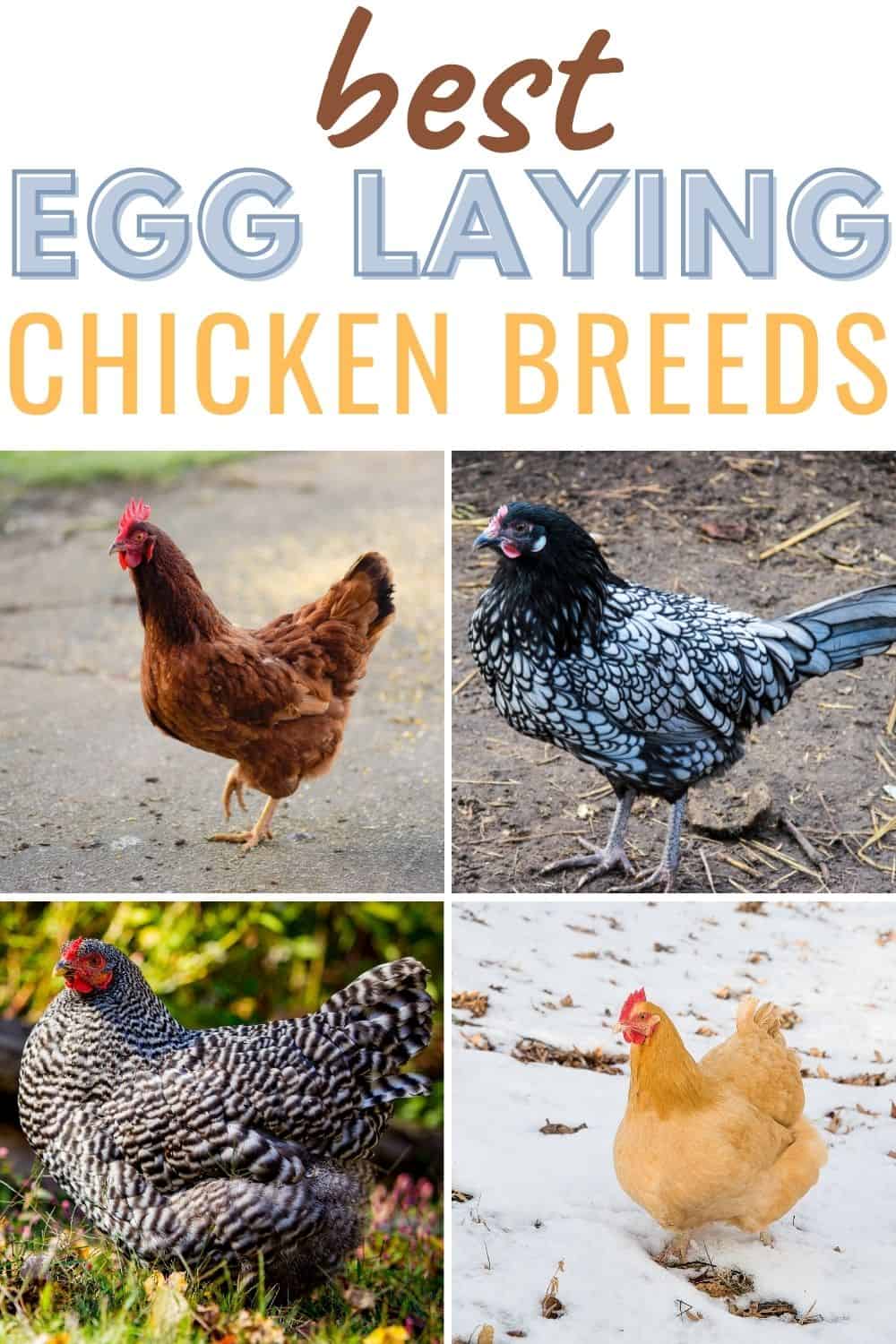

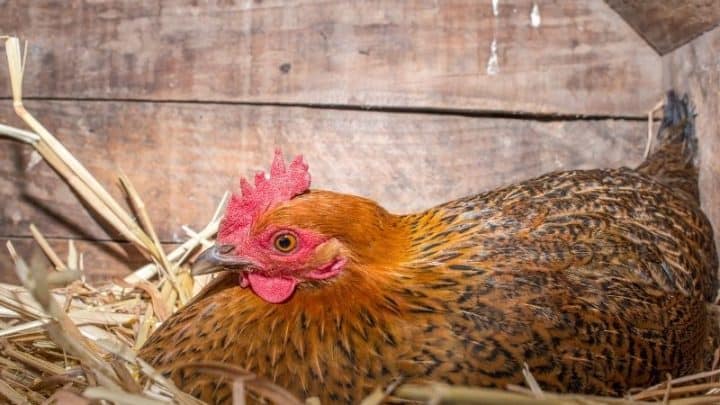

David
Thursday 20th of April 2023
I picked up some Black Copper Maran eggs last year and wound up with three roosters and four hens. I also had four Buff Orpingtons. Before I dispatched my roosters to another farm, they must have diddled my Buffs because I found four Buff-Maran mixes chirping in the goat shed one morning. They are four months old now and absolutely stunning! Though there is no official name due to that they are not a true breed, we identified them as the Phoenix Fowl, named from the unique combination of contrasting colors that resemble bursts of fire, sunsets, and starbursts. Beautiful!
What Is Molting In Chickens And How To Help Them Through It?
Monday 27th of March 2023
[…] hens will grow their feathers back faster and begin to lay sooner than others. Chickens bred for high egg production tend to go through the process quicker and get back to […]
John
Friday 10th of March 2023
So, if one should decide not to cull them, what is the average lifespan of one of these pets?
Adriana
Friday 10th of March 2023
It depends on what type you get: between 3 and 10 years.
Johnson Rose
Sunday 9th of October 2022
Where can I go to order or buy chicks? What do people do with the chickens that don’t lay eggs anymore?
Adriana
Wednesday 12th of October 2022
You can buy chicks from local farms or farming stores. If you have a Tractor Supply close by, they have them in the spring and summer.
As far as what people do with older chickens that no longer lay, I guess it depends. Our 12 chickens are as much egg producers as they are pets. So in our case, they'll continue to live a happy life as long as they live. Other people might choose to cull them.
What To Do With Too Many Tomatoes? 8 Ways To Use Up Your Tomato Bumper Crop
Monday 30th of August 2021
[…] If you like cheese, plop a slice on top of the tomato slices. Add a sunny-side-up egg too, while you’re at it for a heartier meal. We raise chickens and love our organic eggs. If you’d like to get some chickens for eggs, these are the best laying hens. […]